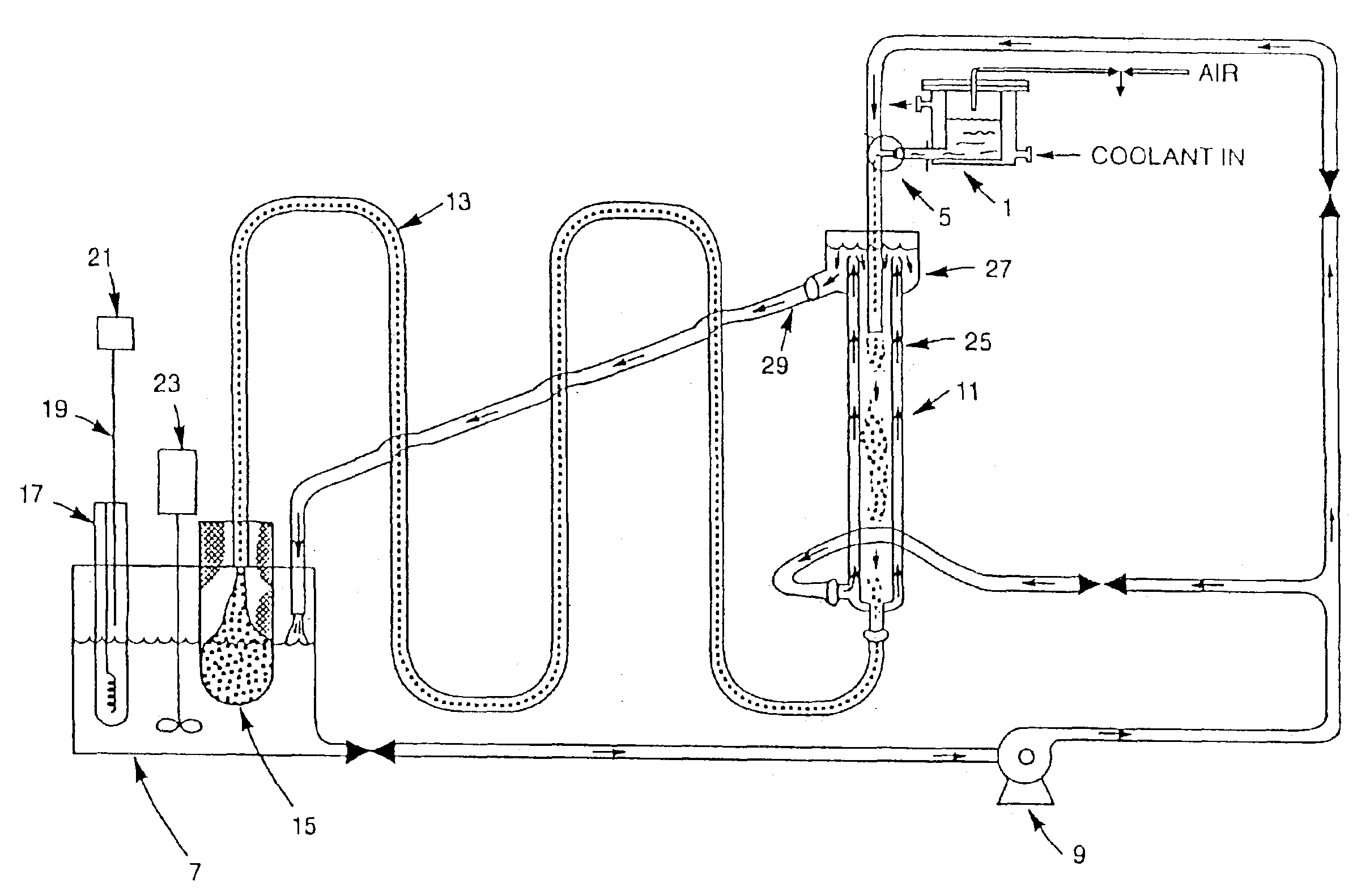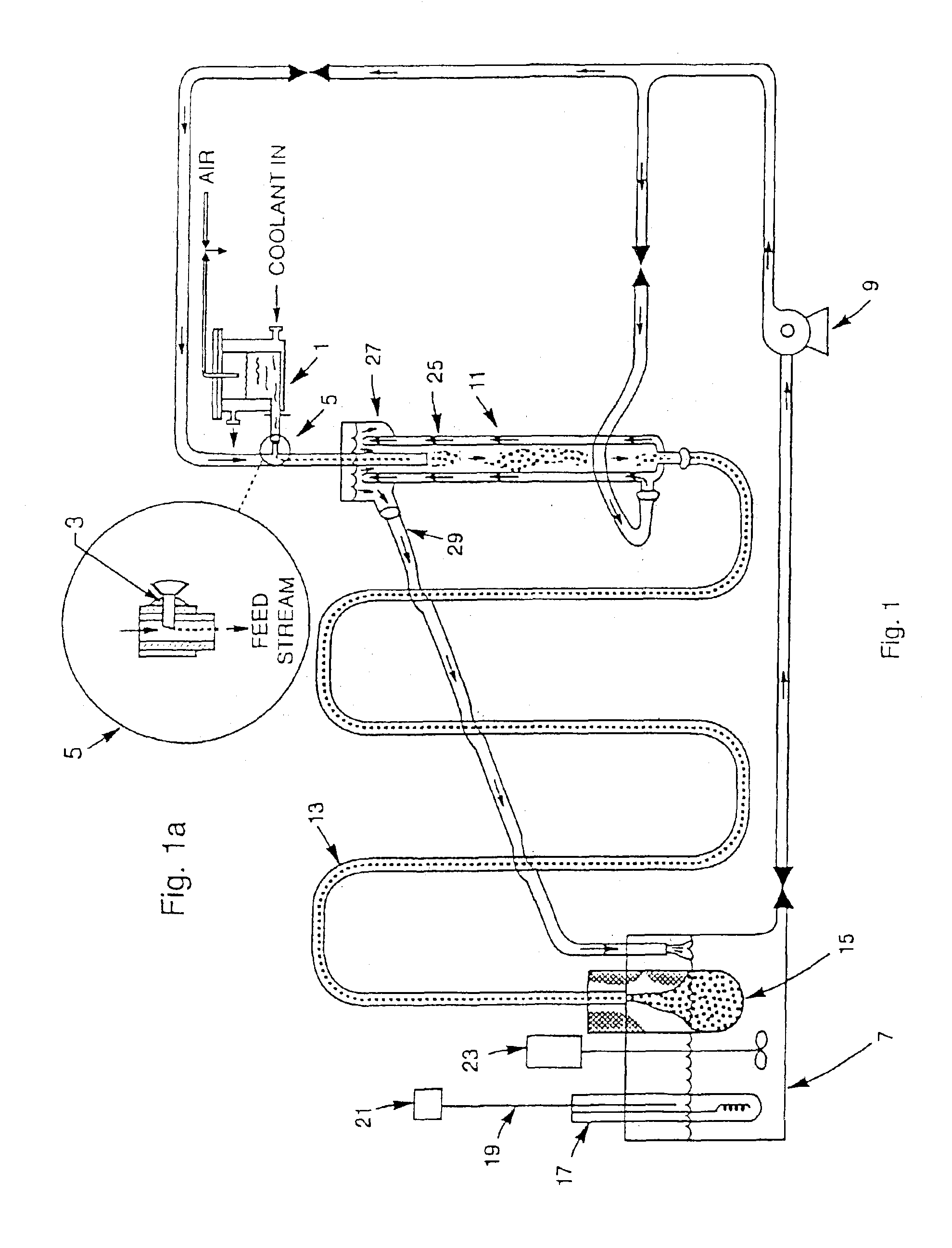Inorganic optical taggant and method of making
a technology of optical taggant and inorganic chemistry, applied in inorganic chemistry, machines/engines, nuclear engineering, etc., can solve the problems of unstable or unpredictable, catastrophic detonation, and difficult and cheap dispersion of taggant material
- Summary
- Abstract
- Description
- Claims
- Application Information
AI Technical Summary
Benefits of technology
Problems solved by technology
Method used
Image
Examples
example 1
[0049]Hydrous zirconium oxide (HZrO) gel beads were made by internal gelation using the technique and apparatus, described above and as shown in FIG. 1 and FIG. 1a, also described by Collins. A feed broth containing 100 ml zirconyl nitrate, 14.5 ml nitric acid, and 70 ml hexamethylenetetramine (HMTA) was injected into warm silicone oil, as described in U.S. Pat. No. 5,821,186, to form spherical gel beads. The beads were dried in air to form small glassy beads, which were then soaked in a solution of 1% Eu nitrate, dried again, and fired in air at 1° C. / min to 1000° C. The fired beads were opaque off-white color. Under UV illumination, the beads displayed a weak red fluorescence.
[0050]Skilled artisans will appreciate that hydrous oxides of other Group IV metals, e.g., Ti may be made by a similar approach (see, for example, Collins, U.S. Pat. No. 5,821,186, the teachings of which are incorporated herein by reference). Furthermore, it is well known that rare earth phosphates are anothe...
example 2
[0051]Wet hydrous zirconium oxide (HZrO) gel beads, made by the method described above, were washed several times in 0.5 M phosphoric acid, allowed to stand about four hours in this solution, then washed several times in 1.0 M phosphoric acid. Hydrothermal conversion was done at 125° C. in 1.0 M phosphoric acid in a closed stainless steel vessel. The conversion step was then repeated several more times, each time increasing the phosphoric acid concentration by 0.5 M until the final treatment was done in 2.5 M phosphoric acid. This material had been dried to form glassy beads. When these dried beads were placed in a 1% Eu nitrate solution, they fractured into concentric shards during rehydration, but absorbed the solution adequately. These fragments were dried and fired in air as in the previous example. Under UV illumination, the particles were very strongly fluorescent (bright red).
example 3
[0052]An attempt was made to avoid the cracking problem encountered when dried HZrP beads were rehydrated. Using the materials and procedures of the previous example, hydrous zirconia beads were reacted with phosphoric acid and washed. While still wet, the HZrP gel beads were placed overnight in a 1% Eu nitrate solution, then dried for several days and fired in air at 1° C. / min to 1000° C. A similar batch was placed overnight in a 1% Ce nitrate solution, dried, and fired in air at 1° C. 1 min to 1000° C.
PUM
| Property | Measurement | Unit |
|---|---|---|
| diameter | aaaaa | aaaaa |
| diameter | aaaaa | aaaaa |
| temperatures | aaaaa | aaaaa |
Abstract
Description
Claims
Application Information
 Login to View More
Login to View More - R&D
- Intellectual Property
- Life Sciences
- Materials
- Tech Scout
- Unparalleled Data Quality
- Higher Quality Content
- 60% Fewer Hallucinations
Browse by: Latest US Patents, China's latest patents, Technical Efficacy Thesaurus, Application Domain, Technology Topic, Popular Technical Reports.
© 2025 PatSnap. All rights reserved.Legal|Privacy policy|Modern Slavery Act Transparency Statement|Sitemap|About US| Contact US: help@patsnap.com


